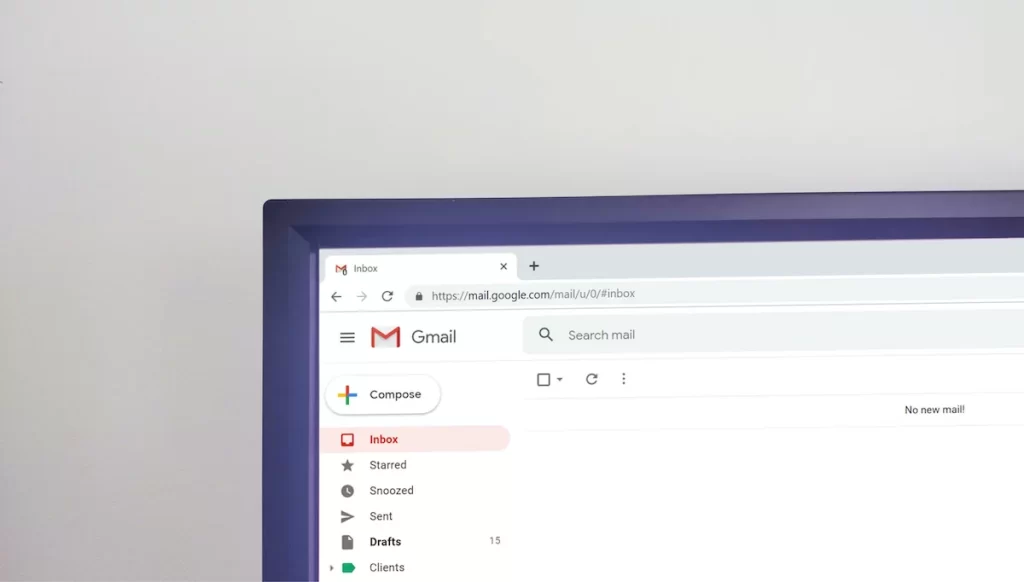What is an Email Blast
The Capabilities of a Successful Email Blast 2023 is a form of email marketing where a common message is sent to a large number of recipients. Mass emailing the same message at the same time enables marketers to do more in less time, though it comes at a price.
There are many reasons why companies use email marketing as a key component of their marketing mix thanks to the effectiveness of email. However, not all conduct blasts as their approach because of the pitfalls.
Read on to find out why companies use email blasts, what can go wrong, an alternative approach and helpful resources to improve your email blasts.
Why Companies Use Email Blasts
Immediate Sales
The number one reason companies use email blasts is simply to sell more stuff. The idea behind most blasts is to put sale flyers in front of eyeballs in hopes they’ll make purchases right then and there.
With a 3800% return on investment, email marketing is definitely worth the effort!
With the advent of social media, some have chosen to ignore email and focus on social, despite the statistics that email is 5x more likely to be seen than a message on Facebook and that email order value averages are at least 3x greater than social media.
When it comes to immediate sales, email and social media shouldn’t be either-or propositions, but rather both done in tandem to complement one another.
Best Practice
More than 60% of subscribers enjoy weekly emails with sale items and more than ¼ of them would like to hear from you more than just once a week.
If you’re sending more often, then try reducing the frequency. If sending less often, then try increasing the frequency. Monitor your revenue and unsubscribe rates to get a handle on whether you’re successful or not.
Lead Nurturing
If you’re selling big ticket items or complex services, then the “one and done” approach is rarely successful, since buyers are making a considered decision. It can take multiple exposures to a product, brand, website or idea before someone is ready to embrace it and part with their hard earned money.
Remember that more than 96% of people who come to your site aren’t ready to buy because they haven’t reached that point in the buyer journey. ¾ of companies say that converting leads into customers is their biggest challenge and most are turning to email to get that job done.
The buyer journey is a progression of steps. Many people don’t even realize that there are better solutions to a problem or that they even have a problem needing a solution.
Step 1 – Awareness
This is where you make them aware that they indeed have an itch that needs scratched.
This could be as simple as the fact that they’re paying too much on their fuel bills or that they could enjoy a new electric car without paying more each month.
Step 2 – Consideration
At this point the buyer is trying to fully understand their problem and searches out ways of solving it. They are in search mode just trying to come to grips with all the possible ways of handling the situation.
Step 3 – Decision
The buyer chooses a solution. For companies conducting email blasts, lead nurturing means sequencing messages so that the first messages illustrate a problem and show others who have enjoyed the satisfaction of a solution. The smiling face of someone driving their new car, saving on their fuel bill and having a lower cost of operation each month is one such example.
Best Practices
Send an email with multiple links in it pointing to different pages on site, each of which is tailored to a particular segment of the buyer journey.
If someone is just getting familiar with a problem, they’ll most likely click on links pointed to pages or posts focused on that area. If they’re aware but wanting to consider solutions, the links pointing to pages or posts about options and their relative strengths and weaknesses will get the clicks.
Finally, if someone is ready to choose a solution, there needs to be links pointing to a pricing page where people can sign-up or buy the product or service. These people are sales-ready leads and should be turned over to the sales team for pursuit!
By giving users multiple options, they can help you understand their place in the buyer journey, allowing you to segment and target them in the future, rather than mass blasting them over and over. See below for our discussion on segmenting.
Multi-Channel Follow-Up
Multi-touch, multi-channel campaigns are much more successful than spray and prey (pun intended) campaigns because people need reinforcement and trust before committing to all but the least expensive of purchases.
Multi-channel marketing relies on the combination, in quick succession, of messages being seen by prospects so that they quickly gain recognition of a brand, product or the suitability of a solution for their needs.
News & Content Updates
A non-threatening way of using email is to keep an audience abreast of what’s happening with the company, such as sharing press releases, stories about new staff members, promotions, acquisitions, new product development and feature additions.
Email is also an ideal way of notifying subscribers that new content has been published on the company blog. Just as you would mention via social media channels about this new blog content, so too would you include it in a non-salesy email newsletter to subscribers.
These types of emails are where you can tell the company story, associate a face with a name, show community service and how the company is giving back.
Consider sending news and content updates as a way of spreading out your sales messages. Rather than bombarding a subscriber with sales, sales, sales, then news, look to replace one of the sales messages with a company update newsletter.
Monitor unsubscribe rates, always. Unsubscribes will clue you in as to whether or not your frequency and message content is aligned with the audience wants and needs.
Collaborative Marketing (Promoting Others)
Not everyone knows about collaborative marketing and not everyone who does it refers to it by this naming convention. In short, collaborative marketing is a case of, “I’ll email your message to my audience if you email my message to your audience”.
Collaboration is a way of extending your reach with a minimal risk, getting introduced to an audience by someone they trust and finding a win-win solution to the problem of figuring out how to improve reach without spending any money.
The challenges of collaborating:
Endorsements are Risky
If you’re endorsing another company, in writing, you better be sure that they’re good at delivering on what they promise. The last thing you want to be doing is to endorse a brand that takes money off of people and then doesn’t make good on their promises.
The risks of endorsements stops many companies from ever considering this approach, which is too bad, because it’s an extremely cost-effective way to increase reach.
Finding Non-Competing Brands that Fit
If you’re selling executive training it would make little sense to go around endorsing nail varnish or vitamins. The key to collaborative marketing is to find complementary products and services that would be a natural fit for your audience.
Staying Opt-In
While it would be easy to just insert a sales message from someone else into your email newsletter, that would mean their message is going to a list that hasn’t opted-in to receiving it.
Instead of ad insertion, the endorsement approach, where you say something positive about another brand, product or service, in your own words, on your own terms, means that the opt-in nature of the list has been preserved.
Problems When Email Blasts Go Wrong
Sending the same email to a large audience (a blast) is fraught with dangers. Despite the chances of positive outcomes, like selling more stuff, there are a large number of risks at the same time.
The risks are multiplied if you try sending large numbers of emails from free email providers or ISP-based email accounts.
Spam Complaints
Spam complaints occur when email recipients are unhappy about something in their inbox and report it as spam. There’s often a button, flag or menu item in your email client or webmail that allows you to report spam in just one click.
When enough people report a sender as having sent them spam, that sender gets flagged.
If you’re sending email blasts and people unsubscribe, it’s your duty to immediately move their email address from your active list and put it on the suppression list.
A suppression list is where you keep track of people who you do NOT want to send any email to, ever. This could be competitors, but most likely are people who have either been dissatisfied customers or asked to unsubscribe in the past.
People who unsubscribe could just be removed from your main list, but then there’s nothing stopping them from being re-added later. This is why they get put on a suppression list.
Any time a new email blast is about to go out the email addresses on the suppression list are filtered from the main list. If you’re doing this manually, consider using Excel. it has the Data -> Remove Duplicates capability so that you can easily get that list cleaned.
In checking your email success rates keep in mind the benchmark of 0.2% (that’s 2 complaints per thousand emails sent) is considered the limit. If you hit 0.2% complaints, or more, on a given email, then you’ve exceeded the safety threshold. At this point your email risks being blacklisted or your email account suspended.
Blacklisting
An email blacklist is a curated list of IP addresses held in a database by one or more blacklist operators who have identified those IP addresses as having sent unsolicited commercial email.
If you’re on a blacklist, it means someone thinks you’re a spammer. If you’re on multiple blacklists, it means you’ve triggered spam complaints, a lot.
Avoiding blacklists means avoiding spam complaints.
Best Practices
– Don’t send from free or ISP email accounts
– Use suppression lists to avoid sending to unsubscribed addresses
– Use opt-in lists (consider double opt-in)
– Don’t buy or rent bulk lists of addresses
– Keep email frequency to 2x per week or less
– Keep email frequency to 2x per month or more
– Stay relevant with your messaging
Unsubscribes
Sending too frequently or blasting unwanted offers that aren’t relevant to the particular individual are two of the most common reasons that people unsubscribe.
The whole idea behind email list building is that, over time, you accumulate a growing pool of people who might be interested in buying, or buying more, of your stuff.
Sending prospects who haven’t ever bought from you the same content as existing customers is a dangerous approach as well. It’s much better to separate out the subscribers to that messages suited to one group aren’t sent to another.
Loss of Customer or Prospect Confidence
Even if someone doesn’t unsubscribe or send a spam complaint, there are risks associated with blasting emails. A prospect, or existing customer, can have a dwindling perception of the brand, which is the exact opposite of the whole point in emailing them.
We know that people buy from people (and brands) that they know, like and trust.
Email subscribers know you, otherwise they wouldn’t be on your opt-in list that you’ve built (probably by giving away free content in exchange for their sign-up). Developing affinity in the form of liking and trusting you is something that happens over time.
Building brand affinity via email doesn’t come from blasting sales flyers at a rapid pace.
People will like you and trust you if you give them value. This is why companies mix in content updates with their email schedule.
Sharing posts and stories about how others are getting the most out of a product, how they can get more done in the day with less effort, and generally anything that will make their life better (and which doesn’t ask for them to buy something in the process) is a great way to develop the “like” and “trust” that you need in order for them to become long lasting customers.
Segmentation vs Blasting
Instead of having one big list and sending everyone the same email, consider splitting your list into smaller segments. As mentioned above, the buyer journey is a progression of steps and people who are at step 1 of buyer readiness shouldn’t be getting the same email as those at step 3.
Occasionally send an email with links to pages or posts that resonate with each step in the buyer journey.
By having all three steps linked, you’ll know where someone is in the sales funnel by what link they click.
Use the feedback from your link click data to segment the list into the three steps of the journey.
The next email they receive should be different, depending on whether they’re at step 1, 2 or 3.
Remember that when they reach step 3 – it’s time to refer to the sales team for follow-up
Conclusion
Segmenting your audience and tailoring messages based on their place along the buyer journey will help you achieve peak results.
Email marketing can be highly profitable and should be a core component of your marketing mix. Be sure to follow best practices, especially sticking to opt-in lists you’ve built, respecting unsubscribes, not oversaturating the inbox and providing information of value and interest that’s not of a salesy nature on a regular basis.





